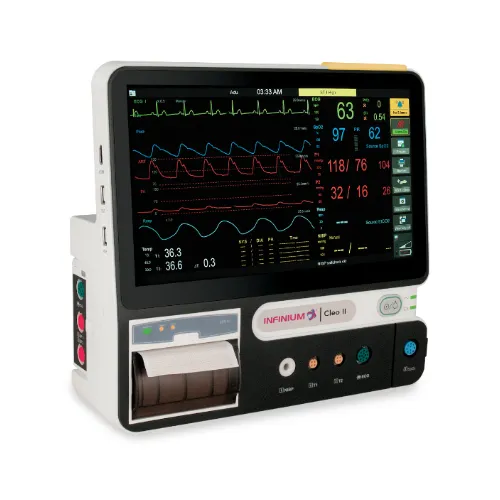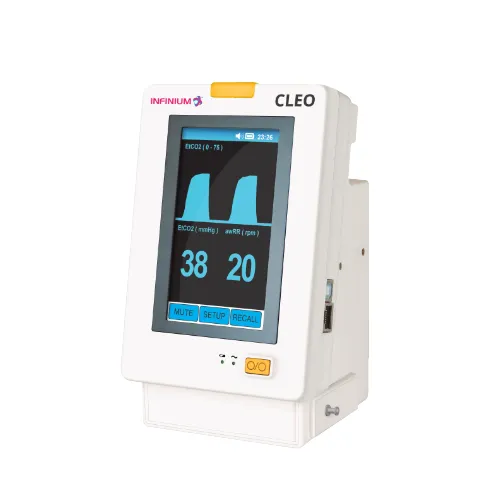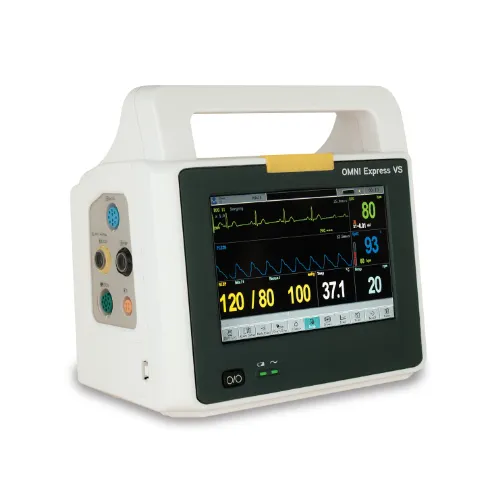Recent studies have found that the use of bedside patient monitors has doubled patient contact time with doctors. Bedside monitors offer doctors the ability to track and record real-time patient health information. This reduces the amount of time health care practitioners have to spend accessing this valuable data.
Knowing how bedside monitors operate and why they belong in a hospital environment is important for medical staff. Being able to keep a detailed run-down of a patient’s vital signs means emergencies get spotted and dealt with fast.
To find out everything you need to know about bedside patient monitors, keep reading the list below.
How Do Bedside Patient Monitors Work?
Patient monitors use particular kinds of sensors to monitor specific areas of a patient. These sensors are attached somewhere on the patient’s body either by clips or through a sticky surface that prevents accidental breakages.
For example, a doctor will want to know how a patient’s heart is functioning regardless of the treatment they are in hospital for. To do this, a doctor will attach sensors to several places near or around the patient’s chest. Sometimes, a sensor is also attached to the back.
The sensors pick up heart rhythms and display them on a screen that a doctor then reads. This allows them to analyze the rhythm of the patient’s heart.
Knowing this information means a doctor can determine how healthy a patient is. The strength of a patient’s heart determines if they are healthy enough for surgery or particular medications. This information is also read during an emergency, such as cardiac failure.
What Are They Used To Monitor?
Aside from heart rate and rhythms, bedside monitors can be used to display and analyze several other features. three of the most important areas that bedside monitors display are body temperature and blood pressure, and blood oxygen ( SpO2 ) levels.
Doctors use temperature to determine if a patient has an infection or not. If it is too high, a patient’s body is fighting something off and this can lead doctors to make a clear diagnosis.
Modern bedside monitors also display how much oxygen a patient’s blood has. If the blood has too much oxygen, serious cell damage can occur. If these levels are too low, symptoms like headaches and weakness start to occur. These symptoms are indicative of respiratory distress.
A bedside monitor can help to stop these effects from happening before they do any serious damage. The patient is more likely to recover if these medical problems get treated with speed.
A bedside monitor can also send an alarm to a medical team if there is an emergency. If a patient’s blood pressure drops to dangerous levels or gets too high, a nurse or doctor will know instantly. This results in a decreased risk of serious side effects or death.
What Kind of Monitors Are Available?
Although there are more detailed specifications for bedside monitors, they are generally split into three types. The types are based on the acuity each kind offers and what they display.
- Low Acuity Monitor – These kinds of monitors are useful for showing a patient’s vital signs at a basic level. They are often used during day procedures on patients who will not be admitted or those who have had a local aesthetic.
- Medium Acuity Monitor – They are used throughout different areas of the hospital, including surgical units and the ER. They provide a good level of detail for monitoring patient vital signs.
- High Acuity Monitor – These machines often provide the most detail for patient monitoring. They are often found in operation rooms and the rooms of patients with more severe illnesses or injuries.
All three types of monitors have their uses within hospitals. Some will require more staff training than others, but all are useful. Using them for specific purposes and patients ensures that the best machinery is left for those who need it the most.
Monitor Categories

This results in a patient suffering less from their illness or injury. Being able to monitor a patient efficiently also allows for them to be discharged from the hospital sooner. This means more beds and resources are free for those who need them.
Who Are They Beneficial For?
Bedside patient monitors have a range of benefits for everyone who uses them. This includes doctors, nurses, and patients themselves.
For doctors, they offer a convenient way to read vital signs and make informed decisions based on what the monitor tells them. Doctors in every field are busy. Without patient monitors, accessing these vital signs would take up much more time and disrupt the other important work doctors do.
Nurses use patient bedside monitors to consistently monitor the patient. They can make note of any unusual or concerning changes in the monitor readings. They quickly pass these on to doctors who use these changes to make a correct diagnosis.
For a patient, a bedside monitor means better quality of care. Medical staff are able to keep a close eye on patients using these monitors. This means that if something strange is going on, treatment gets to the patient in time to help them.
Are They Difficult to Operate?
This depends on the kind of monitor that doctors are relying on. Most monitors are very user-friendly. Health care practitioners will learn how to operate general bedside monitors during their training.
However, some newer models that offer extra features can be more complex to understand. This is because they monitor new and advanced information compared to older models. Getting used to newer models is important for doctors and nurses in every medical area.
Some frequent monitor problems medical staff run into include getting too much information and alarms going off incorrectly. These kinds of glitches are continuously being worked out by machine manufacturers.
Despite some flaws, bedside patient monitors are an important and valuable part of any medical unit. The benefits they offer outweigh any problems they cause.
Can Any Medical Practice Use Any Kind of Monitor?
Any medical practice can purchase any kind of monitor. However, just because they can doesn’t mean that they should. Buying monitors without assessing a facility’s needs is unnecessary and costly.
For example, a GP office doesn’t need a very high-end monitor that would be found in OR rooms. They don’t usually offer beds for overnight care and therefore don’t need the equipment used for this scenario.
A large hospital that deals with patients across a wide area will need more expensive and versatile bedside monitors. These hospitals use this to cope with the medical demands of caring for a large population. Without the best bedside monitors, keeping track of patient vital signs would be difficult and time-consuming.
Before purchasing a bedside monitor, ensure you have considered the needs of your practice, your staff, and your patients.
Are Bedside Patient Monitors Expensive?
The cost of a bedside monitor depends on what functions they offer and how modern they are. They can range from just under $2000 to much more depending on what a hospital or medical practice is looking for.
The cost will reflect the quality and features of the product. Creating a patient monitor budget allows for health care staff to plan what they can afford and purchase equipment based on their needs.
How Are Patient Monitors Read?
The display of a bedside monitor will depend on the type of monitor begin used. However, there are several common features that can be easily read on a patient monitor.
The heart rate is usually written in bold colorful numbers and generally placed in the top right corner. The letters “HR” often follow the number so that it can be identified as a heart rate. “PR” is sometimes used instead to indicate pulse rate.
The blood pressure reading is identifiable by the letters that follow it. They are usually SYST” and “DIAS.” The numbers that indicate patient blood pressure are beside these letters.
Lines going from left to right across the screen represent patient ECG. A respiratory wave also goes in a line from left to right to indicate the quality of patient respiration. It is usually found below the ECG line.
While other monitors will show different vital signs, the above are almost always found in conjunction with any additional displays. They are the most useful patient monitor features for medical practitioners to read and understand.
Bedside Patient Monitors Make Everyone’s Lives Easier
With bedside patient monitors, medical staff can track, access, and record patients’ vital signs. This allows medical staff a convenient and efficient way to track the health of all patients.
Bedside monitors are equally important for patients. They ensure that the basic functions of a patient’s body are operating effectively, and alert healthcare staff to any emergencies instantly. If you would like to learn more about bedside patient monitors, have a look at this webpage. You’ll discover why these monitors are so widely used in hospitals across the globe. You should also contact the dedicated support team if you have any questions.




